
Indications for Use
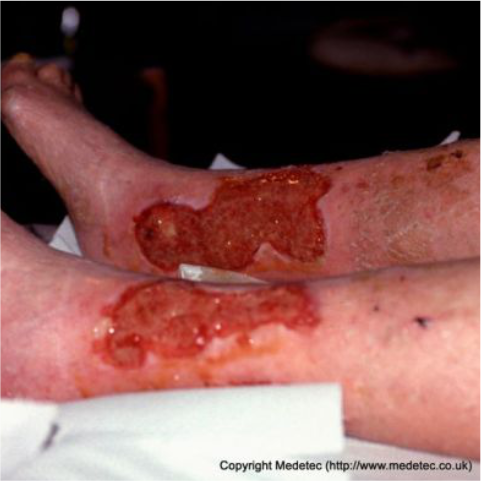
Venous leg ulceration
A loss of skin, below the knee, on the leg or the foot which takes more than 2 weeks to heal. A venous leg ulcer is the most common type of leg ulcer. Venous leg ulcers can develop after a minor injury, where persistently high pressure in the veins of the legs has damaged the skin or where there is venous insufficiency. Symptoms of a venous leg ulcer may include pain, itching, discolouration around the wound, discharge and swelling of the affected limb.
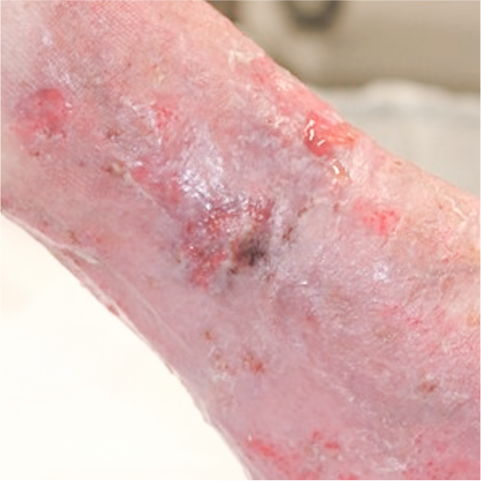
Varicose / Gravitational / Stasis Eczema
This type of eczema appears on the lower legs and is related to poor venous return and / or high blood pressure. If the walls of the veins in the limb are weakened and the movement of the blood back up the legs is sluggish, fluid can pool, creating pressure in the vessels. It oozes through the vein walls into the surrounding tissue, causing oedema. Over time, the blood may leak through the small vessels, causing spots and blisters to appear which can become hot and itchy. If not treated, these can cause skin breakdown, weeping and infection. This type of eczema can often be controlled with a good skin care regime and compression therapy, however sometimes, the individual may require the use of a zinc oxide paste bandage or the use of a topical corticosteroid.
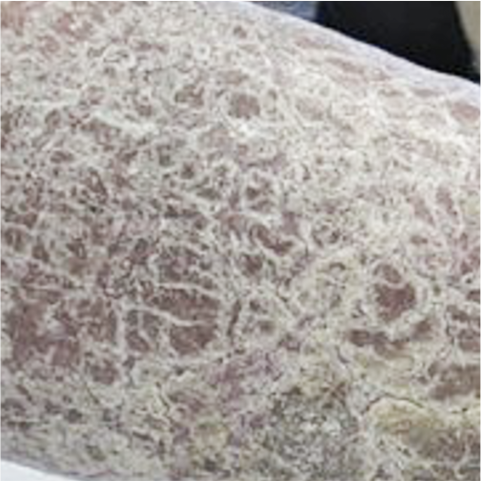
Hyperkeratosis
Hyperkeratosis is an abnormal thickening of the outer layer of the skin of individuals with lower limb issues, caused by over-production of the keratin layer, producing scaly brown or grey patches. This is usually localised to the lower leg and foot and it is often in response to inflammation. The degree of skin thickening will depend on its location, for example, skin cells on the soles of the feet may become thicker than those cells on the leg. Hyperkeratosis often impacts upon the individual in terms of its appearance i.e. dry flaky skin and on occasions there may be an unpleasant odour caused by a build-up of bacteria or fungal colonisation under the skin flakes. It therefore requires active management and an effective regular skin care regime.

Cellulitis of the lower limb
Cellulitis often affects the skin and tissues of the lower legs, but it can also occur in other areas of the body. It occurs when a crack or break in the skin allows bacteria to enter, causing the tissues to become swollen, hot and painful. Left untreated, the infection can spread to the lymph nodes and bloodstream, causing systemic malaise and the condition may become much more serious. People are often more at risk of cellulitis if they have poor circulation, are overweight making mobility difficult or if they have a weakened immune system. Cellulitis is usually treated with antibiotics and a good skin care regime is required to aim to minimise recurrence. Zinc oxide paste bandages are useful in soothing the limb and maintaining the integrity of the skin until the infection is settled.
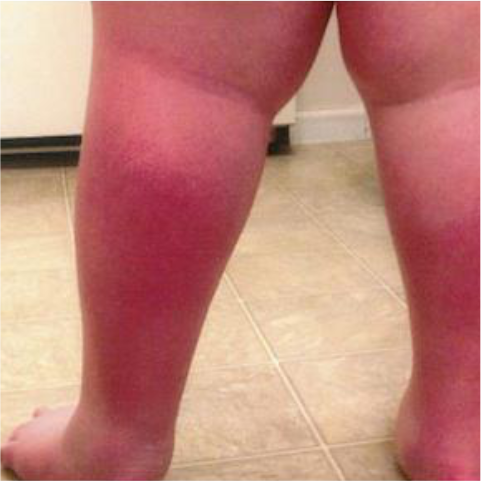
Red leg syndrome
A diagnosis of red leg syndrome may be considered when an individual presents with lower limb redness (usually bilateral), swelling to the limbs, warmth and tenderness but does NOT have a feeling of generalised malaise. Individuals who present with red legs are often mis-diagnosed as having Cellulitis and are therefore over-treated with antibiotics and possible hospitalisation. The clinician treating these patients should consider differential diagnosis and treat the patient and symptoms accordingly – quite often a ‘red legs clinical pathway’ may be utilised. Where cellulitis has been excluded, symptoms may be treated as appropriate, for example, treating varicose eczema, dermatitis and fungal infections. A good skin care routine is actively encouraged and the patient may need to be referred for compression therapy.

Atopic Eczema
Eczema is the term used to describe inflammatory skin conditions which are characterised by red, scaly, weeping and itchy skin. One of the most common types, atopic eczema, is a chronic skin condition which is often associated with asthma and hay fever, as well as reactions to pets, pollen and dust mites. It varies in its severity, sometimes well controlled and at other times some sufferers have regular flare ups, which can be distressing, uncomfortable and inconvenient. During periods of flare up, the skin may become red and inflamed, dry and cracked and the itching causes sufferers to scratch which can lead to bleeding. Over time, the skin can become thickened and hard. Individuals often need to employ a strict daily skin care routine using moisturisers to keep the skin in a good condition, however when flare ups occur they may need to be seen by a skin specialist and will often require other treatments such as steroid creams, bandages or wet wraps. Zinc oxide bandages and stocking are widely used to treat dermatology patients as the zinc oxide is beneficial in maintaining the integrity of the skin.

Contact Dermatitis
Contact Dermatitis is a type of eczema that occurs as a result of skin contact with a particular substance. For example, this might be a medical dressing, soap or a particular type of fabric. It can lead to blisters and may appear like other types of eczema, being itchy, red, scaly and dry.
Scratching can result in broken skin, and infection can occur. For this reason, it is important to use a bland, fragrance-free emollient to reduce the risk of an allergic reaction. If contact dermatitis is suspected, the clinician may make a referral to a dermatologist for patch testing where various substances are applied to the skin to assess if there is any reaction.
Zinc oxide is helpful in the treatment of dermatitis as it soothes and helps to maintain the integrity of the skin.
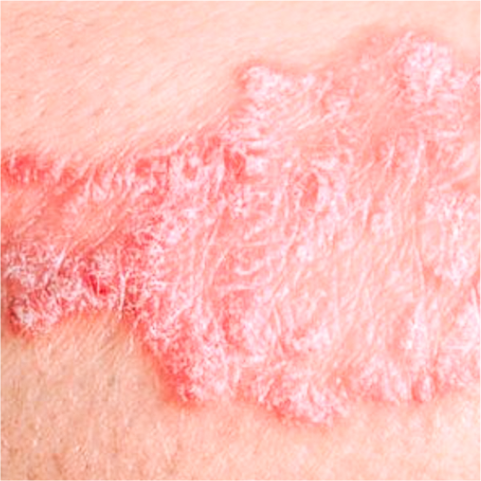
Psoriasis
Psoriasis is a skin condition which causes crusty, flaky, and reddened patches of skin which are covered with silvery scales. It can start at any age, but quite often begins in early adulthood, affecting men and women equally. The severity of psoriasis varies greatly and for some may be a minor irritation whilst others are impacted to a greater degree affecting their whole quality of life. Psoriasis is a chronic disease which can remain settled for long periods and then suddenly flare up with more severe symptoms.
The patches of affected skin often appear on elbows, knees or scalp but can also appear anywhere on the body. Whilst the patches may only be small, they become itchy, sore and problematic.
Images supplied from www.medetec.co.uk
